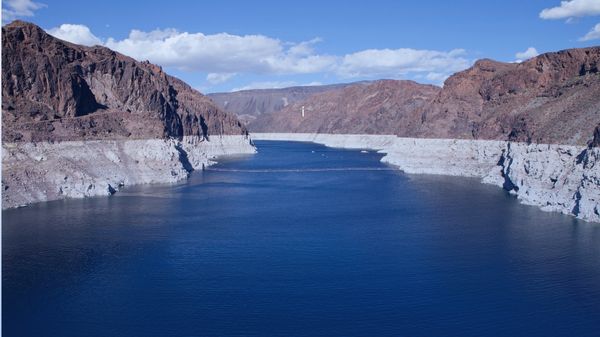We’re in the midst of a global energy revolution that’s changing the game. The shift towards green energy is reshaping how we generate and consume electricity, and it holds enormous potential for our planet’s future.
In this article, we’ll explore the various types of green energy and their benefits and disadvantages. From solar and wind power to hydropower and geothermal energy, we’ll dive into the innovative technologies driving this revolution.
Join us as we discover how we can all contribute to a greener and more sustainable world.
Types of Green Energy
We will now explore the various types of green energy that are transforming the global energy landscape. The green energy revolution is truly a global game changer.
When it comes to future prospects, green energy holds immense potential. As innovations in green energy technology continue to emerge, we can expect even greater advancements in renewable energy sources.
From solar and wind to hydropower and geothermal, these types of green energy are paving the way for a more sustainable future.
The beauty of green energy lies in its ability to harness the power of nature while minimizing our impact on the environment. With ongoing research and development, we can look forward to even more efficient and cost-effective green energy solutions.
The future is bright, and green energy is leading the way towards a cleaner and greener world.
Benefits and Disadvantages
One major consideration when it comes to green energy is weighing its benefits and disadvantages. Let’s take a closer look at the pros and cons.
On the advantages side, green energy doesn’t release greenhouse gases into the atmosphere, which helps in mitigating climate change. It’s collected passively from natural resources and is renewable, so it won’t run out. The potential for electricity generation is limitless.
However, there are limitations as well. Fossil fuels have a more established infrastructure for generation and distribution, while renewable energy infrastructure is still catching up. Building renewable energy facilities requires significant initial investment, although costs have been decreasing. Solar and wind energy are intermittent sources and depend on weather conditions, and storage costs for green energy can be substantial.
Despite these limitations, the benefits of green energy make it a game changer in the fight against climate change.
Green Energy Usage Statistics
According to recent data, the usage of green energy has been steadily increasing globally. Green energy revolution trends show that more and more countries are recognizing the importance of transitioning to renewable sources.
In 2020, renewable energy accounted for about 12% of energy consumption in the United States, with about 20% of electricity generated coming from renewable sources. The future prospects of green energy are promising, with wind energy projected to account for 35% of electricity production by 2050 and solar energy estimated to make up 25% of the energy market by the same year.
This growing trend is crucial for addressing climate change and reducing the consequences of greenhouse gas emissions. As the world continues to prioritize sustainable energy solutions, the future looks bright for green energy.
Importance of Transitioning
Transitioning to renewable energy sources is crucial for mitigating climate change and reducing the harmful consequences of greenhouse gas emissions.
However, this transition does come with its own set of challenges. One of the main challenges is the need for effective renewable energy policies. These policies play a crucial role in promoting the adoption of green energy technologies and incentivizing their development. They need to be well-designed and implemented to ensure a smooth transition.
Additionally, transitioning to renewable energy sources requires significant investments in infrastructure and technology. This can pose financial challenges for many countries and industries. However, the good news is that the costs of green energy production have been decreasing, making it more accessible and affordable.
With the right policies and investments, transitioning to renewable energy can be a game changer in the fight against climate change.
Collective Effort for Adoption
Working together to adopt green energy is essential for a sustainable future. Renewable energy initiatives and global renewable energy targets require a collective effort from individuals, businesses, and governments worldwide.
It’s like a team sport, where everyone plays a crucial role in achieving the goal. Imagine a soccer team trying to score a goal without passing the ball or coordinating their movements. It would be chaos! Similarly, without a collective effort to adopt green energy, we can’t achieve the desired impact on climate change.
So, let’s join forces and support companies that prioritize green energy in their mission. Choose green energy sources, such as 100% solar-powered plans, and conserve energy to minimize our environmental impact.
Together, we can make a real difference and create a brighter, cleaner future for generations to come.
Energy Conservation and Sustainability
Let’s prioritize energy conservation and sustainability to achieve a greener future. Energy efficient technologies and green building design play a crucial role in reducing our carbon footprint and preserving our resources.
Energy efficient technologies, such as LED lighting and smart thermostats, help us to minimize energy consumption without compromising our comfort. By implementing green building design principles, like proper insulation and natural lighting, we can reduce energy waste and create more environmentally friendly spaces.
Not only do these practices contribute to a greener future, but they also bring cost savings and improve the quality of our lives. So let’s embrace energy conservation and sustainability, because going green doesn’t just save the planet, it can also bring a little green back into our wallets.
Conclusion
The green energy revolution is undeniably a game changer in our global energy landscape. As we embrace renewable energy sources and advocate for their adoption, we’re paving the way towards a greener and more sustainable future.
However, it’s important to remember that Rome wasn’t built in a day, and implementing these changes will require a collective effort from all of us. So let’s join hands and make hay while the sun shines, ensuring a brighter and cleaner world for generations to come.




